Popular games for platform Legacy Computer
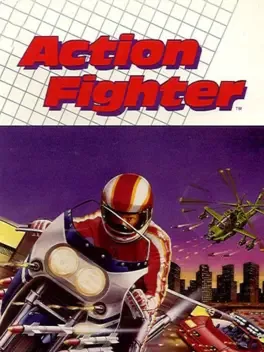
Take to the streets or take to the skies. Because Action Fighter is the incredible, transformable combat vehicle. You start out on a customized cycle. Built with enough speed and power to jump over water and overtake enemies. Then, by finding the right parts along the way, you'll change your cycle into a supercharged, state-of-the-art sports car. Next, add two turbojets to make your car airborne. And take to the skies. Down hyped-up helicopters and jet spaceships from above. And no matter which vehicle you're manning- or who you're after- get ready to stand by for action!
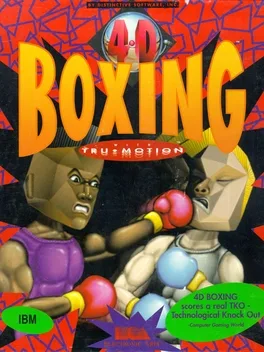
4-D Boxing leaves behind any pretences of being a pure arcade game based on boxing, and aims to recreate the sport in full detail. The graphics engine allows for multiple camera angles and viewpoints, and considerably detailed visuals. These required more advanced hardware than was common at the time, but a stick-figure mode was included as a compromise. The moves on offer include all the uppercuts and hooks of a real fight, and the players are designed to move realistically to implement them. You progress through the game by taking on a succession of increasingly difficult fighters, and get to train your boxer in between. Advanced action replays are included as well, so you can review all that happened.
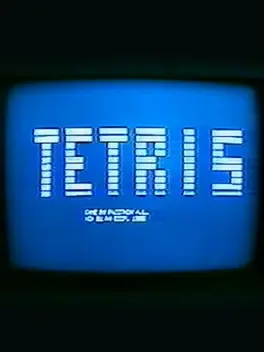
The original version of Tetris was created by Alexey Pajitnov for the Elektronika-60 computer. It was never released commercially. It was also playable on the successor DVK-1 and DVK-2 computers, although it is unknown whether that is a different version, or simply the same code running on a different computer. Minor visual differences are present, but the gameplay is the exact same.
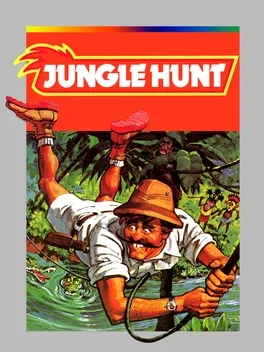
Jungle Hunt is side-scrolling arcade game produced and released by Taito in 1982. It was initially released as Jungle King. Jungle Hunt is one of the first video games to use parallax scrolling. The player controls an unnamed jungle explorer sporting a pith helmet and a safari suit. The player attempts to rescue his girl from a tribe of hungry cannibals by swinging from vine to vine, swimming a crocodile-infested river, jumping over or ducking beneath rolling rocks, then releasing the girl before she is lowered into a boiling cauldron. Home versions were released for the Apple II, Atari 2600, Atari 5200, Atari 8-bit family, Commodore 64, ColecoVision, VIC-20, and IBM PC. The PC version was developed by Sierra On-Line and is incompatible with everything except an original IBM PC/XT with a CGA video card. In the Atari-ported versions the hero is named Sir Dudley, and the girl, married to Sir Dudley, is Lady Penelope.
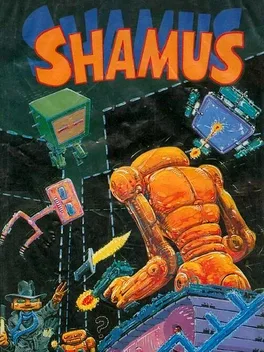
Shamus is a shooter with light action-adventure game elements written by Cathryn Mataga and published by Synapse Software. The original Atari 8-bit computer version was released on disk and tape in 1982. According to Synapse co-founder Ihor Wolosenko, Shamus made the company famous by giving it a reputation for quality. "Funeral March of a Marionette", the theme song from Alfred Hitchcock Presents, plays on the title screen.
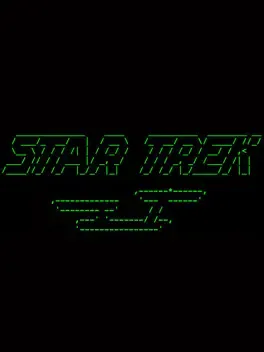
Star Trek is a text-based strategy video game based on the Star Trek television series (1966–69) and originally released in 1971. In the game, the player commands the USS Enterprise on a mission to hunt down and destroy an invading fleet of Klingon warships. The player travels through the 64 quadrants of the galaxy to attack enemy ships with phasers and photon torpedoes in turn-based battles and refuel at starbases. The goal is to eliminate all enemies within a random time limit.
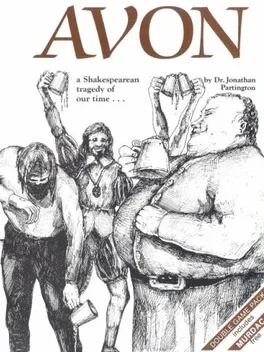
An Interactive Fiction adventure by Jon Thackray and Dr. Jonathan Partington for the IBM System/370 'Phoenix' mainframe system at the University of Cambridge.
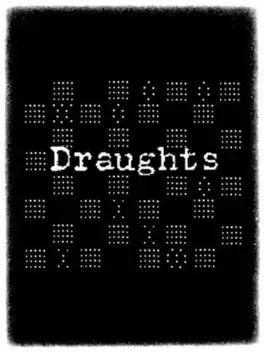
A game of draughts (a.k.a. checkers) written for the Ferranti Mark 1 computer by Christopher Strachey at the University of Manchester between 1951 and 1952. In the summer of 1952, the program was able to "play a complete game of Draughts at a reasonable speed".
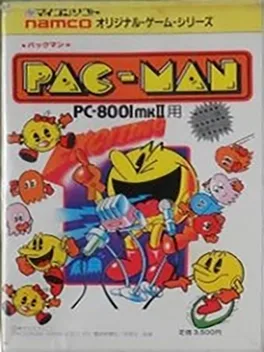
A port of Pac-Man for the NEC PC-8000.
Robot Chess is an early chess game in which the user can play against an AI. The AI is only powerful enough to compute "mate-in-two" problems and thus the game didn't represent a full game of chess. Players would enter moves of the Ferranti Mark 1 and the computer would print out the response move. The simulation ignores some chess rules such as en passant, promotion and castling.
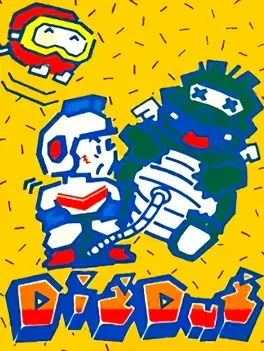
Casio PV-1000 port of Dig Dug.
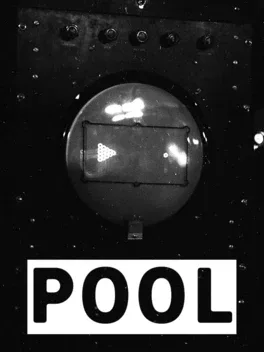
A game of pool (billiards) developed by William George Brown and Ted Lewis in 1954 on the MIDSAC computer, intended primarily to showcase the computing power of the MIDSAC. "The game displayed a 2-inch rendition of the pool cue for the players to line up their shots and ran a simulation of the colliding and ricocheting balls in real-time, implementing a full game of a cue ball and 15 frame balls for two players. Graphics were drawn in real-time on a monochrome 13" point plotting X-Y display, the screen being updated by the program 40 times a second (that is, in a normal in-game situations with 2 to 4 balls moving at once). However, for time constraints, the table and its pockets weren’t drawn by the computer graphics, but were rather drawn manually onto the display using a grease pencil." - Norbert Landsteiner for masswerk.at

Nobunaga's Ambition, the first of the series, was released in 1983. Players assume the mantle of either Nobunaga Oda or Shingen Takeda and strive to conquer the entire land (17 areas in the Kansai and central Japan region). They manage their country to make it rich, then prepare their military forces. These then attack and defeat surrounding Clans in battle.
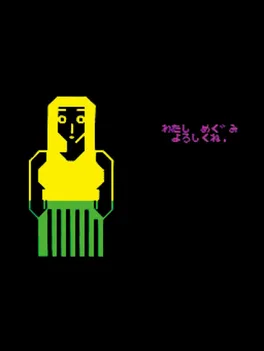
One of the very first erotic video games ever released. Gameplay is comprised of a strip variation of rock-paper-scissors, based on a concept popularized by "Konto 55-gou no urabangumi wo buttobase!", a variety show which ran from April 27, 1969 to March 29, 1970. Players set how many articles of clothing they would like their opponent Megumi to wear, and after each victory she removes one piece until she is nude. Originally released for Sharp MZ-80K systems on cassette and sold at Personal-computer Shop Kouchi, it was later ported to Sharp MZ-700 in a bundle with Breakout clone 'Rowdy-Ball', and as a type-in program published in 'MZ-700 Joyful Pack.'
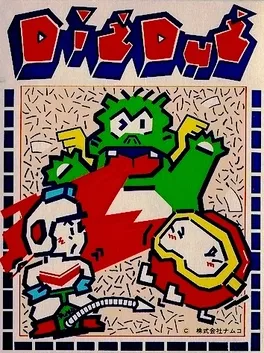
Sord M5 port of Dig Dug.
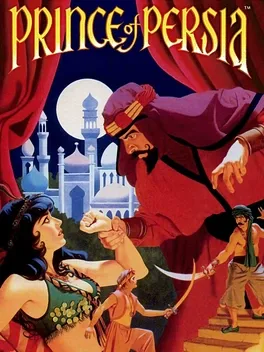
The SAM Coupé port of Prince of Persia.
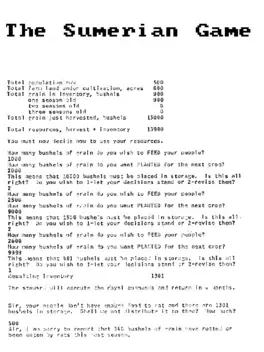
The Sumerian Game is a text-based strategy video game of land and resource management. It was developed as part of a joint research project between the Board of Cooperative Educational Services of Westchester County, New York and IBM in 1964–1966 for investigation of the use of computer-based simulations in schools. It was designed by Mabel Addis, then a fourth-grade teacher, and programmed by William McKay for the IBM 7090 time-shared mainframe computer. The Sumerian Game has been described as the first video game with a narrative, as well as the first edutainment game. As a result, Mabel Addis has been called the first female video game designer and the first writer for a video game.
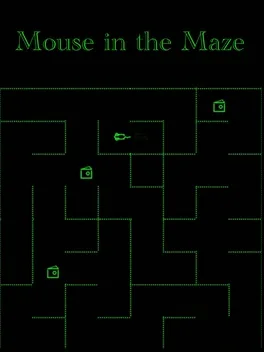
A game where players place maze walls, bits of cheese, and (in some versions) martini glasses by way of a light pen interacting with the screen.
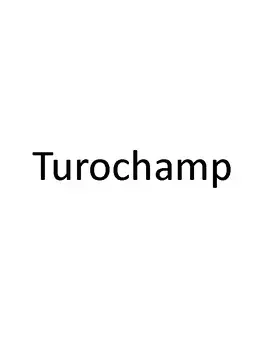
Turochamp is a chess program developed by Alan Turing and David Champernowne in 1948. It was created as part of research by the pair into computer science and machine learning. Turochamp is capable of playing an entire chess game against a human player at a low level of play by calculating all potential moves and all potential player moves in response, as well as some further moves it deems considerable. It then assigns point values to each game state, and selects the move resulting in the highest point value. Turochamp is the earliest known computer game to enter development, but was never completed by Turing and Champernowne, as its algorithm was too complex to be run by the early computers of the time such as the Automatic Computing Engine.

Do you want to be a prisoner of your dreams? Who are you pretending to be? Everything you do is just a farce. A puppet. Escape reality with this visual novel, go beyond the limits of the self and wake up from your dream. This is a visual novel about a character who pretends to be someone, even to herself. She wants to wake up from this dream and she needs you to do it. The game lasts around 15 to 30 minutes, featuring 3 different endings.
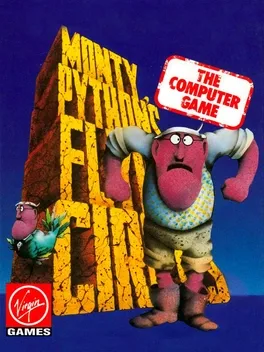
You control Mr. D.P Gumby and, understandably, you have to get back his 4 pieces of brain. This is not easy. If it was, this game would not be a game of skill and fun, now would it? There are four skill levels to this game, a piece of brain is being held on each skill and fun level. The levels are all quite different in a skill and fun sort of way, but all have different things in common. Good things like sausages, eggs, beans, spam (skill) and cheese (fun) and bad things like dead parrots. Because each level is quite different in a skill and fun sort of way, Mr. Gumby cannot always walk, so, his body is changed to suit the surroundings. Like on the first level, where he is changed into a fish to swim in the maze like underwater caverns. When each level runs out there is no more, Mr. Gumby is changed back to normal (well normal for him) and he is sick, all the good things picked up along the way go in a big hole and are counted for points. Best of all though if you got 16 lots of spam Mr. Gumby can have a piece of his brain back. Then you have to do it all again.
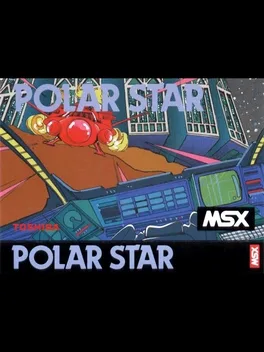
A sink of shear hatred, violence and deadly weapons is the blazing hell you find yourself in under the Polar Star. A frosty scenery, for action that couldn't be hotter!
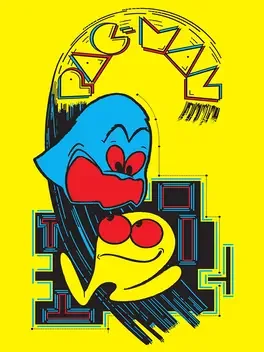
Port of Pac-Man for MZ-1500 computers.